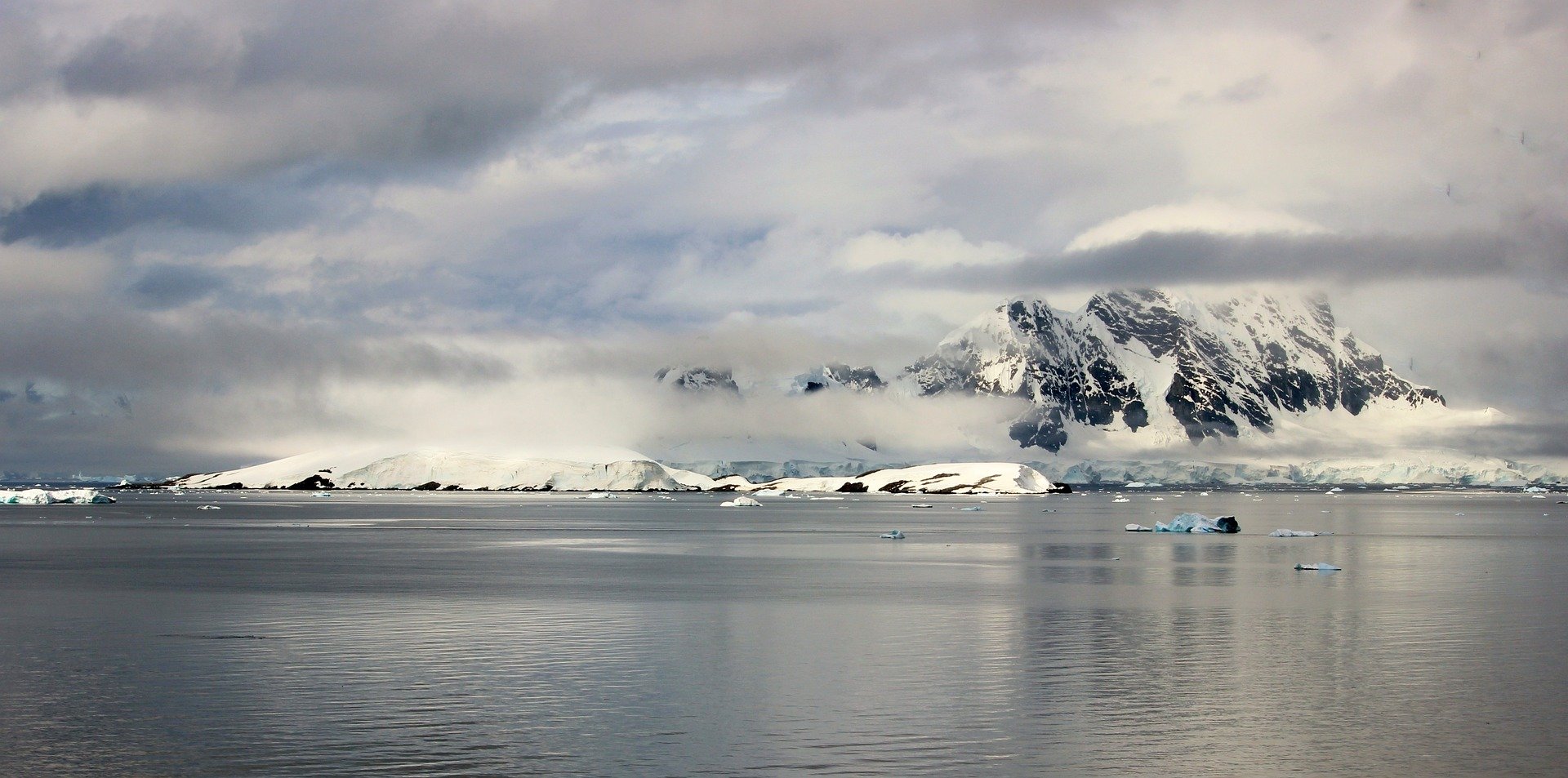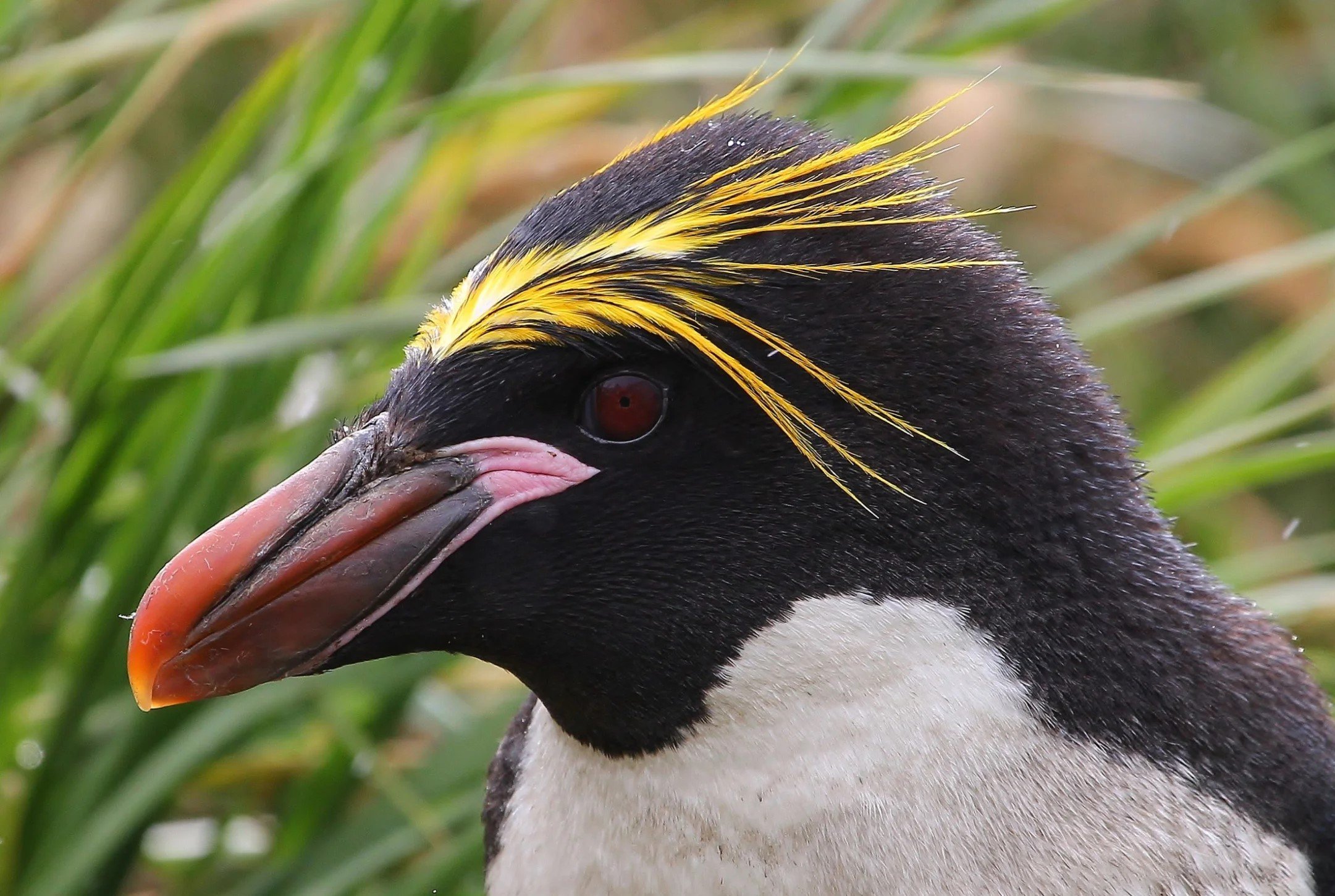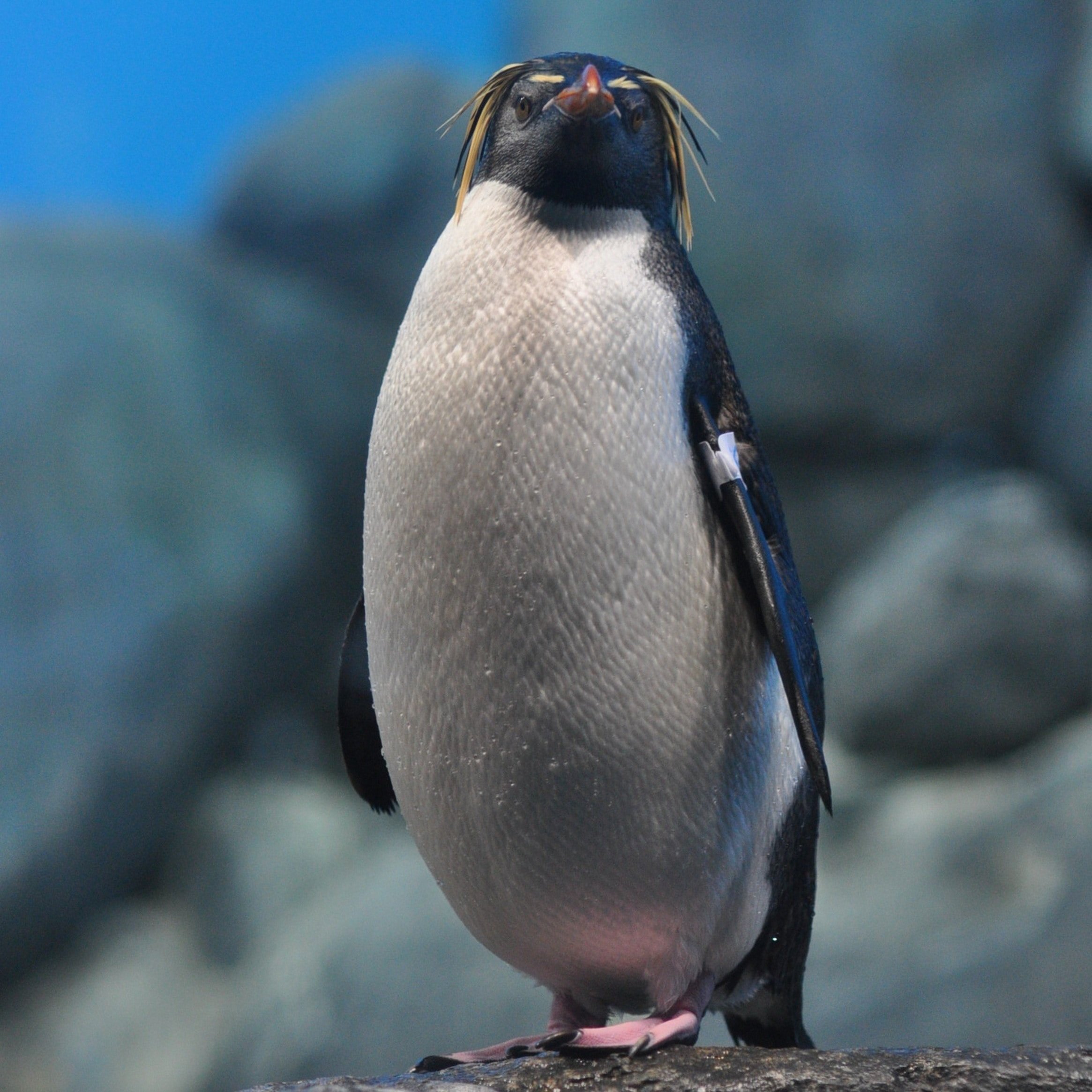
Antarctica
Common Name: Macaroni penguin
Scientific Name: Eudyptes chrysolophus
Image: © Tetyana Dotsenko

Fact
The scientific name Eudyptes chrysolophus is derived from the meaning of Eudyptes (good diver) and chrysolophus (golden crest).
About
Image: © Richard Collier
Overview:
The Macaroni penguin uses the northern tip of the Antarctic Peninsula as their breeding grounds, where conditions are less harsh. Macaronis are very colonial, forming massive colonies of hundreds of thousands of birds, nesting on hillsides and rocky cliffs. They are very vocal, especially when establishing territories.
Lifespan:
Up to 12 years.
When to spot:
Macaroni penguins arrive at their breeding colony late October. They breed, raising their chicks until they reach 60 to 70 days old, after which they fledge, leaving to go to sea. Macaroni penguins leave their breeding colony by April/May the following year.
During the non-breeding season, the species are migratory and are rarely found near land.
Where to spot:
Terrestrial Sub-Antarctic to Antarctic Peninsula, in rocky, water-bound areas, on rocks and cliffs above the ocean.
When feeding and searching for food, groups have been observed as far as the islands off of Australia, New Zealand, southern Brazil, and South Africa.
Diet:
Mostly krill - accounts for 90% of their food source during the breeding season. They are thought to be the largest single consumer of marine prey of all the seabirds - eating an estimated 9.2 million tonnes of krill each year!
A variety of crustaceans.
Predators:
Primary predators of macaroni penguins include killer whales and leopard seals. In colonies, skuas prey on nestlings and smaller / weaker individuals.

Fact
The breeding colonies of this species are among the largest and densest of the penguin species.
How To Identify
Named for their distinctive and unique orange plume feathers . They are the largest of the crested penguins. Whilst some penguins waddle, macaroni penguins hop!
Vulnerability Status
IUCN Red List status: Vulnerable - decreasing
Country status: Vulnerable
Population size:
Despite there being an estimated 18 million extant individuals of the species, widespread declines in their abundance have been observed since 1975. Notably, a 50% decline in the South Georgian population was observed between the 1970-90s, as well as the total disappearance of colonies in Southern Chile. These concerning declines in the overall population have lead to the classification by the IUCN as globally Vulnerable.
Important breeding ground populations exist at Isles Crozet (2.2 million pairs), Kerguelen (1.8 million pairs), Heard Island (1 million pairs), South Georgia (1 million pairs) and Marion Island (290,000 pairs).
The Falkland Islands population is estimated at no more than 1,000 individuals.
Threats
Key threats to species:
Climatic variation negatively affecting polar ecosystems: female reproduction may be negatively affected by climate and fishing-induced reductions in krill density; changes to at-sea overwinter foraging; and rapid changes to species ranges increasing the competition for food between species.
Commercial fishing
Marine pollution
Importance of the species:
Macaroni penguins are one of the most important avian marine consumers in the sub-Antarctic region - consuming more prey than any other seabird species.

Fact
Each female usually lays two eggs - she will discard the first smaller one after the second larger egg arrives.
Conservation Actions
Long term monitoring programmes are in place at several breeding colonies, with most breeding islands being protected as reserves. Fisheries for Antarctic krill are managed at South Georgia as a means to reduce resource competition with land-based predators that target the same resource; during the summer, krill fisheries are prohibited from all waters surrounding South Georgia and the South Sandwich Islands, and during the winter they must stay at least 30km and 50km from the coast, respectively.
Further Information
Click the title below for further information.
-
Falklands Conservation is a non-governmental organisation working to protect the wildlife in the Falkland Islands for future generations. They undertake practical conservation projects, surveys and scientific studies, conduct annual monitoring of seabird populations, rehabilitate oiled penguins, publish guides and information on many aspects of the Falkland Islands environment, and involve Islanders of all ages in their activities.
-
British Antarctic Survey (BAS) delivers and enables world-leading interdisciplinary research in the Polar Regions. Its skilled science and support staff based in Cambridge, Antarctica and the Arctic, work together to deliver research that uses the Polar Regions to advance our understanding of Earth as a sustainable planet. Through its extensive logistic capability and know how BAS facilitates access for the British and international science community to the UK polar research operation. Numerous national and international collaborations, combined with an excellent infrastructure help sustain a world leading position for the UK in Antarctic affairs.
Common Name: Commerson’s dolphin
Other Names: piebald dolphin, panda dolphin, tonina overa
Scientific Name: Cephalorhynchus commersonii
Image: © Caroline Weir / Falklands Conservation

Fact
They are known for being curious and playful around humans and are often found approaching and doing figure 8 patterns underneath boats and surfing waves.
About
Overview:
There are two distinct subspecies that have geographically separated by 8500 km of ocean:
Cephalorhynchus commersonii commersonii, known as the South American Commerson’s, are located around the southern point of South America, off the coasts of Argentina, southernmost Chile, and the Falkland Islands.
Cephalorhynchus commersonii kerguelenensis, the Kerguelen Commerson’s are located around the Kerguelen Islands in the Southern Indian Ocean.
Lifespan:
They are thought to live to 18 years on average but have been known to reach up to 25.
Habitat:
Comerson’s dolphins are mainly seen in shallow coastal waters, such as sheltered fjords, and river mouths and kelp beds. They prefer waters less than 200m deep, where the continental shelf is flat.
They are found in the Southern Hemisphere in cold temperate waters and sub Antarctic waters.
When to spot:
They can be seen all year round, however, as with most dolphin species, they follow fish populations offshore for winter and so between June-December they are often seen in open-water.
Diet:
They have a variety of food in their diet including schooling fish such as anchovies and sardines as well as squid, shrimps and even seaweed and algae, often adapting their diet to what is available seasonally in their local habitat.

Fact
Older matriarch Commerson’s dolphins have been observed “babysitting” for other mothers, keeping their calves safe at the surface while the mothers hunt.
How To Identify
Commerson’s dolphins are nicknamed panda dolphins due to their distinctive clear-cut black and white colour markings. They have black heads, faces, fins and tails and white torsos.
Juvenile Commerson’s are grey all over and gain their markings as they mature.
Adult Commerson’s can reach up to 1.8m in length, although they are usually less than 1.5m, and 86kg in weight.
Vulnerability Status
IUCN Red List status: Least Concern
(the Kerguelen subspecies is currently listed as Endangered in the regional IUCN Red List for French Southern Territories)
Country status: Least Concern
Population size: Unknown
Threats
Key threats to species:
The main threat to Commerson’s dolphin populations is from bycatch, the accidental killing from fishing gear targeting other species. As they live in such close proximity to the shore they are often caught up in gillnets.
Ghost fishing is also a threat, when lost or discarded fishing gear continues to entrap animals. Once entangled they are unable to come up to the surface for air, so end up drowning.
They were traditionally harpooned for their meat and oil in the Patagonian region. This is now illegal and the practice has majorly declined. However on occasion it does still take place.
The aquarium trade is a further threat to the dolphins, with Commerson’s being found in aquariums in Germany, Japan and the US.
Importance of the species:
They play a key role in the balance of the ecosystem, preying on small fish, shrimp, worms and tunicate, keeping numbers down. They are also predated by leopard seals and orcas and possibly some species of shark.

Fact
They are named after French naturalist Dr. Philibert Commerson who first discovered them in the Strait of Magellan in 1767.
Conservation Actions
A variety of conservation measures have been put into place to conserve the Commerson’s Dolphins. This includes the enforcement of strict bans on commercial fishing. However, due to the vast expanse, the majority of which is uninhabited, of the Southern Ocean, enforcement of anti-poaching laws are much harder to regulate.
Further Information
Click the title below for further information.
-
Whale and Dolphin Conservation is the leading charity dedicated to the protection of whales and dolphins. They work globally through campaigns, lobbying, advising governments, conservation projects, field research, rescue, education and much more.








